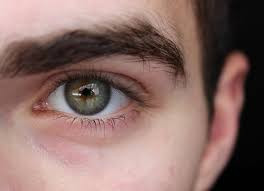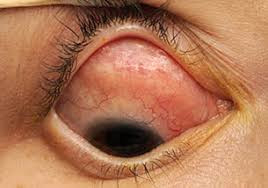Definition
Optic neuritis is a condition characterized by inflammation of the optic nerve. This inflammation can result from an autoimmune process (where the immune system attacks the body) or as a sequelae to an infection. The incidence of optic neuritis varies, with approximately 1-5 cases per 100,000 people, depending on region and race. It is more common in temperate climates.
Causes
The precise cause of optic neuritis is unknown, but it is believed to be linked to an autoimmune reaction. This reaction occurs when the immune system mistakenly identifies part of the body as foreign agents and attacks it. In optic neuritis, the autoimmune reaction is thought to damage the myelin sheath surrounding the optic nerve cells. The myelin sheath, a mixture of fat and protein, insulates axons (long fibers of nerve cells) to speed up electrical conduction and protect the axons. Damage to the myelin sheath slows electrical conduction and renders the axons vulnerable to damage.
Apart from the autoimmune process, optic neuritis may also result from the spread of infections, typically originating from the sinuses (air-filled cavities in the facial bones) or systemic viral infections.
Risk Factors
Optic neuritis is more prevalent among women than men, with a ratio of 3:2. It typically affects young adults, particularly those between the ages of 20 and 45. The condition is more common in temperate regions, such as Europe and North America.
In many instances, patients report flu-like symptoms prior to the onset of optic neuritis. Additionally, optic neuritis is often linked to the autoimmune multiple sclerosis, which primarily targets nerves in the brain and spine. Approximately 75% of individuals with multiple sclerosis have experienced optic neuritis at least once in their lifetime.
Symptoms
The symptoms of optic neuritis include a gradual decline in visual acuity over several days, which then persists. Typically, optic neuritis affects only one eye. Vision deterioration may worsen with increased body temperature, such as during exercise or hot baths. Discomfort when moving the eye, seeing frequent flashes of light, fading color vision, and decreased visual field are also common complaints.
Diagnosis
Diagnosing optic neuritis begins with a thorough medical history review. Preceding symptoms of this disease may include flu-like symptoms, chills, nausea, and aches. A history of autoimmune diseases such as multiple sclerosis increases the risk. The doctor then conducts various ocular examinations, including visual acuity, color vision, light reflexes, eye movement, and visual field tests, to detect visual impairments indicative of optic neuritis.
A direct examination of the optic nerve can be performed using a funduscopy, which may reveal abnormal retinal blood vessels and swelling of the optic nerve. The retina, located inside the eyeball, receives light and transmits it to the optic nerve.
Optical coherence tomography (OCT) is another diagnostic tool that measures the function of the optic nerve. Visual evoked potentials (VEP) can also assess nerve function. Additionally, magnetic resonance imaging (MRI) of the brain may be conducted to check for multiple sclerosis, which is often associated with optic neuritis.
To exclude other conditions that might cause similar symptoms, doctors may order laboratory tests, including blood sedimentation rate, thyroid hormone function, and antinuclear antibodies (ANA), which are commonly present in autoimmune diseases such as lupus.
Management
In most cases of optic neuritis, vision typically returns to near-normal within a few weeks or months, even without treatment. However, therapeutic intervention can accelerate the recovery of visual function. Medication is prescribed to reduce inflammation of the optic nerve. Patients are usually hospitalized for a few days to receive anti-inflammatory drugs intravenously, followed by outpatient oral medication.
Steroids are the primary anti-inflammatory drugs used for optic neuritis. Consequently, doctors may also prescribe medications to reduce stomach acid to mitigate the risk of gastric ulcers, a common side effect of steroids. Patients with diabetes should inform their doctors, as steroid treatment can elevate blood sugar levels, potentially leading to diabetic ketoacidosis (a condition where blood becomes acidic due to insufficient sugar in body tissues). The dosage of steroid medication is gradually tapered as vision improves.
While visual function is impaired, patients are advised to wear protective glasses to reduce the risk of falls and injuries. Protective eyewear is essential to prevent further eye damage.
Doctors will continue to monitor patients' progress through regular visual function tests, including visual acuity, color vision, and visual field tests. OCT examinations may be performed 6-8 weeks after initial treatment and repeated after 6 months to track improvements.
Complications
Generally, vision in optic neuritis can return to near normal. Recovery typically begins after one month, with vision improvement continuing for up to a year. If recovery does not occur, complications may include permanent vision loss, which can range from mild to severe. Additionally, the visual field may be permanently affected, causing significant difficulties when driving. Optic neuritis can recur, and those who have experienced it are at a higher risk of developing multiple sclerosis.
Prevention
Optic neuritis occurs unpredictably, making it challenging to prevent. Preventive measures are associated with the risk factors, including practicing good hygiene, such as proper coughing and sneezing etiquette and frequent hand washing, to reduce viral infections. Complications can be prevented by adhering to prescribed anti-inflammatory medication. The use of protective glasses is recommended for individuals with visual impairments to avoid eye injuries from impacts or falls. It is also advisable not to drive until vision has fully recovered to prevent traffic accidents.
When to See a Doctor?
Seek immediate medical attention if you experience a sudden decrease in vision or worsening vision over a few days. Other signs of optic neuritis include fading color vision, seeing flashes of light, and a reduced visual field. If you drive, you may notice a sudden narrowing or worsening of your field of vision.
Looking for more information about other diseases? Click here!
- dr Nadia Opmalina
Dahl, A. (2021). Adult Optic Neuritis Workup: Approach Considerations, Magnetic Resonance Imaging, Visual Evoked Potentials. Retrieved 11 November 2021, from https://emedicine.medscape.com/article/1217083-workup#showall
Guier, C., & Stokkermans, T. (2021). Optic Neuritis. Retrieved 11 November 2021, from https://www.ncbi.nlm.nih.gov/books/NBK557853/
Lee, A., Jirawuthiworavong, G., Pecha, J., Bhat, N., Bindiganavile, S., & Miller, A. (2021). Demyelinating Optic Neuritis - EyeWiki. Retrieved 11 November 2021, from https://eyewiki.aao.org/Demyelinating_Optic_Neuritis












